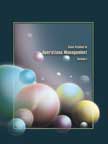The Making of Boeing's 787 'Dreamliner'




|
|
ICMR HOME | Case Studies Collection
Case Details:
Case Code : OPER053
Case Length : 17 Pages
Period : 2002-05
Organization : Boeing
Pub Date : 2006
Teaching Note :Not Available
Countries : US
Industry : Aircraft Manufacturing
To download The Making of Boeing's 787 'Dreamliner' case study
(Case Code: OPER053) click on the button below, and select the case from the list of available cases:

Price:
For delivery in electronic format: Rs. 400;
For delivery through courier (within India): Rs. 400 + Rs. 25 for Shipping & Handling Charges
» Operations Case Studies
» Case Studies Collection
» ICMR HOME
» View Detailed Pricing Info
» How To Order This Case
» Business Case Studies
» Case Studies by Area
» Case Studies by Industry
» Case Studies by Company
Please note:
This case study was compiled from published sources, and is intended to be used as a basis for class discussion. It is not intended to illustrate either effective or ineffective handling of a management situation. Nor is it a primary information source.
|
|
<< Previous
Excerpts Contd...
The Materials Used
|
Boeing claimed that the Dreamliner would be a completely new aircraft with major
modifications in the composition of materials being used. The prime objective
for launching the Dreamliner was to produce a fuel-efficient, cost-effective,
less noisy and comfortable aircraft which could travel continuously for long
distances.
One of the prime reasons for the huge attention the Dreamliner got was Boeing's
decision to use composite materials extensively. The Dreamliner would be the
first commercial aircraft to be built with a greater proportion of advanced
composite materials than aluminium. Boeing decided to use carbon
fiber-reinforced plastic in building a commercial plane - usually a very costly
proposition...
|
|
Start of Production
On August 26, 2005, Boeing released the final exterior design of 787. In the
beginning, Boeing and its suppliers had planned to make each barrel of the
Dreamliner's fuselage from large composite panels and join the panels using
bolts. However, for bolting, the edges of the panels were required to be
thicker which would add weight and increase maintenance work. Hence, Boeing
started to look out for options that would enable them to build a single
large piece of composite for each barrel...
|
|
The Road Ahead
The Dreamliner was designed to fly longer distances without stopping. The
introduction of direct flights from one city to another far distant city
would save substantial sums for airline companies.
For passengers, this would save a lot of time as they need not take another
connecting flight to reach their destination. The cargo carrying capacity of
the Dreamliner was nearly 60% more than current aircrafts. The aircraft made
less noise and caused less air pollution... |
Exhibits
Exhibit I: Market Shares of Boeing and Airbus (1990-2004)
Exhibit II: Timeline of Boeing's Various Aircraft Models
Exhibit III: Boeing 787 Models Specifications
Exhibit IV: Engines for the 787
Exhibit V: Boeing Section 47
Exhibit VI: Boeing 787 Dreamliner
Exhibit VII: Orders for Dreamliner (Till November 2005)
|
|



